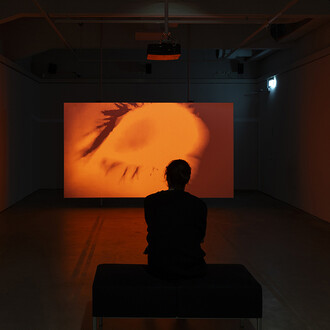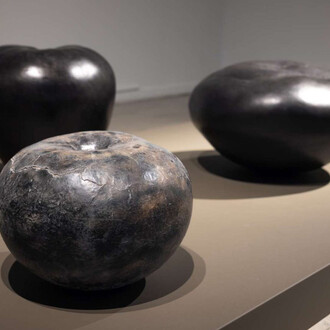Medieval and Renaissance art provided 20th-century artists with emotional material and ways to deal with fundamental human feelings and the dark side of the psyche, as well as birth, death, suffering and sexuality. The exhibition Gothic modern, from darkness to light highlights a phenomenon that has not been addressed in art history before, examining how it is manifested in the works of renowned artists. The Ateneum launched its significant international cooperation project around the topic in 2018, and the museum also serves as the first venue for the exhibition, from 4 October 2024 to 26 January 2025.
Gothic modern rewrites the history of modern art. The international exhibition will focus on 19th and 20th-century modern art, the creators of which were influenced by European medieval and Northern Renaissance art. Modern art has previously seldom been examined from the perspective of its relationship with the past, and the extent of this phenomenon has not been researched before. The Ateneum launched a significant international cooperation project on the topic in 2018, and the museum also serves as the first venue to host a related exhibition.
Medieval and Renaissance art provided 20th-century artists with emotional material and ways to deal with fundamental human feelings, as well as birth, death, suffering and sexuality. Artists were interested in the dark side of the human psyche, strangeness, and depicting uncanny frightening things. In the post-World War I period, artists also strove to portray how humans are part of their environment or nature. Depictions of community and trauma became a staple subject in modern art.
The artists featured in the exhibition include Arnold Böcklin, Lucas Cranach the Elder, Akseli Gallen-Kallela, Vincent van Gogh, Theodor Kittelsen, Käthe Kollwitz, Edvard Munch, Hugo Simberg, Helene Schjerfbeck, Marianne Stokes, and Gustave Van de Woestyne.
Preparations for the international project began before the Covid pandemic and the war in Ukraine. With its universal human themes, the Gothic modern exhibition is now more relevant than ever. The works included in the exhibition deal with the big questions of life, even in a brutal manner and with dark humour. At the same time, the exhibition is strongly linked to many topical phenomena in popular culture in our time.
Famous artists, such as Edvard Munch and Käthe Kollwitz, as examples of the phenomenon
The exhibition will present famous artists and works as examples of the newly researched phenomenon. For example, in the exhibition, Hugo Simberg’s The garden of death (1896) will be related to the phenomenon and perspective that new research on art history has brought to light. Helene Schjerfbeck renewed her work through medieval art. Key works will also be seen from Edvard Munch, including one of the artist’s most famous paintings, The sun. At the same time, the exhibition will highlight unsung artists such as Fritz Boehle and Marianne Stokes.
Other key works in the Gothic modern exhibition are the prints by the German artist Käthe Kollwitz (1867–1945). These emotional and political works deal, for example, with the trauma of war, the loss of a child, and grief. Kollwitz is a big name globally in art at the moment, and a solo exhibition of her work is on display at the Museum of Modern Art in New York until 30 July 2024. Kollwitz’s art, with its timeless formal idiom and its themes, resonates in our own time, in which there is a need to process grief and trauma through art.
A look to the past reformed modern art
Medieval and Renaissance art, and artists such as Hans Holbein the Younger, Lucas Cranach the Elder and Matthias Grünewald, became relevant in the early 20th century in the post-World War I period. The artists found a connection and an interest in the art and architecture of German-speaking countries and in their formal idiom. Berlin became a hub of contemporary art, and medieval cities, such as Bruges and Lübeck, became places of interest to artists. German-speaking countries became interested in Nordic art, and common interests were discovered.
A look to the past reformed art. Influences were adopted freely and in different ways. Artists also moved away from their canvases and started creating glass art, furniture and tapestries. In addition to paintings and prints, the Gothic modern exhibition displays objects, sculptures and furniture, including a rarely seen sheet music cabinet from the late 1890s, carved by Mary and Akseli Gallen-Kallela together. Artists also became interested in the restoration of churches, and the art of the period was characterised by non-commercialism and introversion.
The Ateneum as the initiator of an international project and the first exhibition venue
The curator for the Ateneum exhibition is museum director Anna-Maria von Bonsdorff. The exhibition is based on a long research project, which, for the first time, explored how artists of the modern era became interested in medieval art. The project has been led by Professor Juliet Simpson (Coventry University), who is a guest curator for the exhibition, working together with von Bonsdorff. After its debut at Ateneum, the exhibition will travel to the National Museum, Norway and the Albertina Museum, Vienna, where it will be curated by Vibeke Waallann Hansen and Cynthia Osiecki (Curators, National Museum, Norway) and Ralph Gleis (Director, Alte Nationalgalerie), respectively.
The exhibition to be complemented by a comprehensive exhibition catalogue
The exhibition will coincide with the publication of a comprehensive exhibition catalogue in English and Norwegian, which will be distributed by Hirmer Publishers, the University of Chicago Press (USA and Canada) and Thames and Hudson (the rest of the world). A more concise Finnish-language exhibition catalogue will also be published. The exhibition catalogues will include articles written by Anna-Maria von Bonsdorff, Ralph Gleis, Vibeke Waallann Hansen, Kjartan Hauglid, Timo Huusko, Stephan Kuhn, Marja Lahelma, Jeanne Nuechterlein, Riitta Ojanperä, Cynthia Osiecki and Juliet Simpson. The editors-in-chief of the publication in English and Norwegian are Anna-Maria von Bonsdorff and Juliet Simpson. The publication in English will be edited by Katja Ikäläinen. The publication in Finnish will be edited by Hanne Selkokari.
















